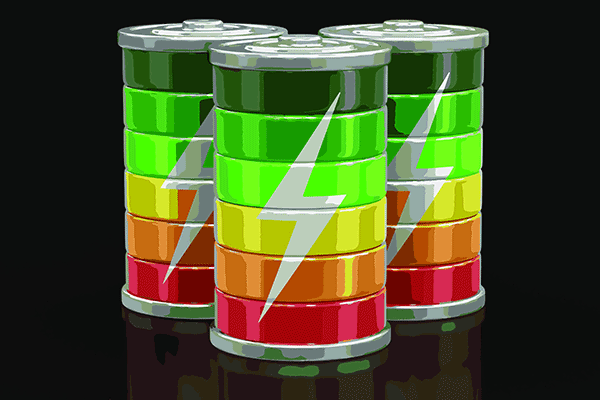With the rapid development of electric vehicles, energy storage, and other fields, the performance of lithium batteries has also put forward higher requirements. In the case of constant battery volume and weight, the performance of battery storage energy mainly depends on the energy density of the battery. So what exactly is the energy density of a battery? Today I will discuss this issue with you.

What is Battery Energy Density?
Energy density is the energy stored per unit of a certain amount of space or mass of matter. This measurement is typically presented in Watt-hours per kilogram (Wh/kg). The energy density of a battery is also the amount of electrical energy released per unit volume or mass of the battery on average. The energy density of a battery is generally divided into two dimensions: weight energy density and volume energy density.
Battery weight energy density = battery capacity × discharge platform/weight; the basic unit is Wh/kg.
Battery volume energy density = battery capacity × discharge platform/volume; the basic unit is Wh/L.
The higher the battery’s energy density, the more power is stored per unit volume or weight.
How to increase the energy density of lithium batteries?
Increase the specific capacity of electrode materials
The specific capacity of electrode materials refers to the amount of charge that can be stored per unit weight of material. By selecting materials with higher specific capacity, the energy density of lithium-ion batteries can be increased. For example, silicon-based materials can be used to replace traditional carbon materials.
Optimize the electrolyte
The quality and performance of the electrolyte have a significant impact on the energy density of lithium-ion batteries. Optimizing the electrolyte can increase the battery’s conductivity and energy density. For example, using a high concentration of electrolyte or adding additives to improve the performance of the electrolyte.
Reduce the weight of battery components
By reducing the weight of battery components, the energy density of lithium-ion batteries can be increased. For example, using lightweight electrode materials or reducing the amount of electrolyte.
Improve the charging efficiency of the battery
By improving the charging efficiency of the battery, more energy can be stored in the battery, thereby increasing the energy density of the battery. For example, optimizing the battery charging algorithm, reducing the internal impedance of the battery, and other methods can improve charging efficiency.
Use high-energy-density positive electrode materials
Positive electrode materials are the components with the highest energy density in lithium-ion batteries. By using high-energy-density positive electrode materials, the energy density of the entire battery can be increased. For example, high-energy-density positive electrode materials such as nickel-cobalt-manganese oxide can be used.














